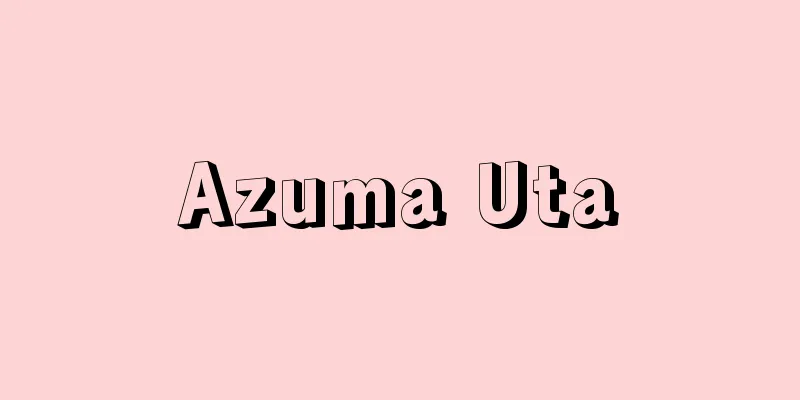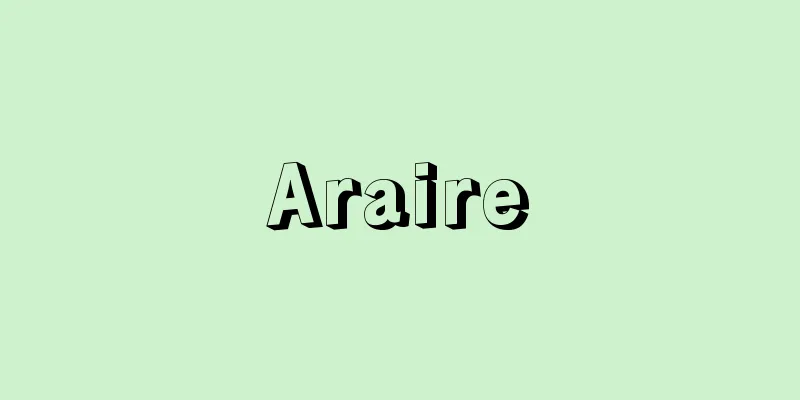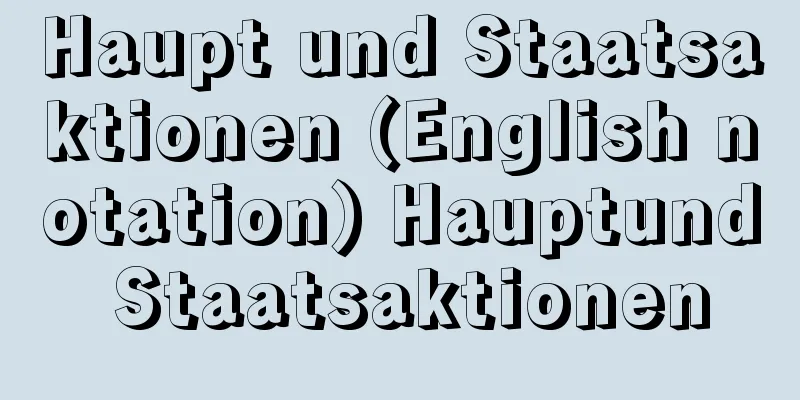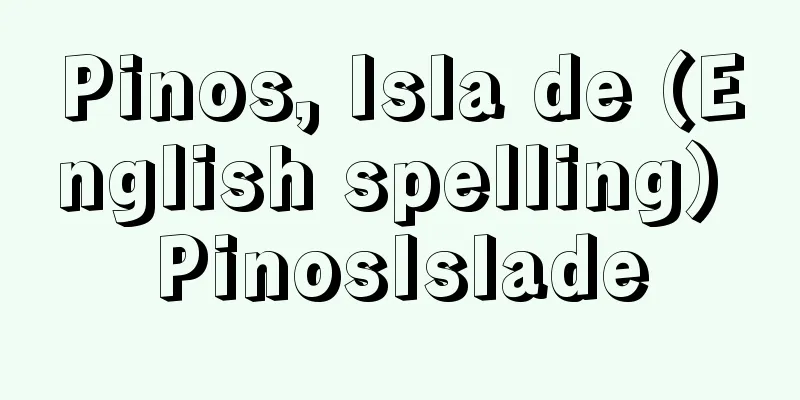Azuma Uta

|
This refers to poems from the eastern part of Japan, and is a general term for the waka poems collected under the title "Eastern Poems" in Volume 14 of the Manyoshu and Volume 20 of the Kokinshu. It can also be referred to individually as "Eastern Poems in the Manyoshu" or "Eastern Poems in the Kokinshu." [Hiroshi Endo] Manyoshu TokaThere are 230 poems in total (238 if you include those that are written in their entirety among the Idenka poems), and they are arranged in two groups: 90 poems from 12 provinces, including Totomi Province, Suruga Province east of Shinano Province, Izu, Sagami Province, Musashi Province, Kazusa Province, Shimousa Province, Hitachi Province, Kozuke Province, Shimotsuke Province, and Mutsu Province, and 140 poems with unknown provinces. Among these, there are a few poems that seem to have been written by aristocrats from the capital who had traveled to the eastern provinces, but most are thought to be folk songs shared by people in the eastern provinces, such as folk songs sung on occasions such as work and ceremonies, or songs sung at drinking parties. Therefore, all of the poems are unknown. Also, although all of them are in the well-formed tanka form, it is thought that many of them were originally in an unformed form. The main characteristics of these eastern poems in the Man'yoshu are as follows. (1) The subject matter featured must be closely related to daily life, such as scenes from work, or familiar animals, plants, and other natural scenes captured with vivid eyes. "A handmade piece that is washed in the Tama River. What a lovely piece of art it is." Kokinshu TokaThese 13 poems are from five provinces east of Ise Province: Kai, Sagami, Hitachi, and Mutsu. They were kept in the Ooutadokoro (Great Poetry Office) at the Imperial Palace, and are thought to have been sung with music during Shinto rituals and other ceremonies. They share similar ideas and phrases to the Toka poems of the Manyoshu, and are thought to have originally been folk songs or similar songs. Although the style is much more refined than the Toka poems of the Manyoshu, they are unique poems in the Kokinshu. "Although Michinoku is far away, the rowing boat in Shiogama Bay is saddened." "Manyoshu Toka" by Yukio Tanabe (1963, Hanawa Shobo) " "Manyoshu Toka Theory" by Tadashi Okubo (1982, Hanawa Shobo) Source: Shogakukan Encyclopedia Nipponica About Encyclopedia Nipponica Information | Legend |
|
東国地方の歌の意で、『万葉集』巻14と『古今集』巻20の、「東歌」という標題のもとに収められた和歌の総称。万葉集東歌、古今集東歌と、単独ででもいう。 [遠藤 宏] 万葉集東歌全部で230首(異伝歌のうち一首全体を記すものを加えると238首)あり、遠江(とおとうみ)国、信濃(しなの)国以東の駿河(するが)、伊豆、相模(さがみ)、武蔵(むさし)、上総(かずさ)、下総(しもうさ)、常陸(ひたち)、上野(こうずけ)、下野(しもつけ)、陸奥(むつ)、計12か国の90首と、国の不明な140首とに分けて並べられている。これらのなかには東国に下った都の貴族の作とおぼしき歌も少数混入しているが、多くは労働や儀礼などの場で歌われた民謡や酒宴の席で歌われた歌など、東国の人々に共有されていた歌謡と思われる。したがってすべて作者不明。またすべて整った短歌形式だが、もとは整わない形のものも多かったと考えられる。このような万葉集東歌のおもな特徴を以下にあげる。 (1)労働などの一場面や身近な動植物その他の自然を生きた目でとらえた、いわば生活に密着した素材が取り上げられていること 「多摩川にさらす手作(てづく)りさらさらに何(なに)そこの児(こ)のここだ愛(かな)しき」 古今集東歌伊勢(いせ)国以東の甲斐(かい)、相模、常陸、陸奥、計5か国の13首。宮中の大歌所(おおうたどころ)で管理され、神事その他の儀式の際に音楽とともに歌われたものと考えられる。万葉集東歌との間に類似の発想や語句を有し、元来は民謡あるいはそれに類する歌であったと思われる。万葉集東歌よりはよほど洗練された歌風だが『古今集』のなかでは異色の歌である。 「陸奥(みちのく)はいづくはあれど塩釜(しほがま)の浦こぐ舟の綱手悲しも」 『田辺幸雄著『万葉集東歌』(1963・塙書房)』▽『大久保正著『万葉集東歌論攷』(1982・塙書房)』 出典 小学館 日本大百科全書(ニッポニカ)日本大百科全書(ニッポニカ)について 情報 | 凡例 |
Recommend
Palaeocoppice
… [Masamichi Takeda] [Fossils and lineages] The o...
Leningrad
…The second largest city in the Russian Federatio...
Horai - Horai
In China, Horai is a sacred mountain located in th...
Squid fishing - Ikatsuri
…A type of lure used for squid fishing. A cylindr...
Koshi Revolution - Koshi Revolution
...A national event to change the era name (gengo...
'Ammān
The capital of Jordan, located in northwestern Jor...
Kikishi - Kikishi
…Hearing and vision are relatively well developed...
American soldier fly - American soldier fly
An insect of the Diptera family, Scorpionidae. It ...
Jade Emperor - Gyokko
The Jade Emperor (Shang) is the supreme deity of T...
Kari Niyazov, TN - Kari Niyazov
…After Shah Rukh's death, the country fell in...
Lintel - Kamoi
A horizontal member that divides the top of an op...
Julio-Claudian dynasty - Julius-Claudian dynasty
The family name of the first 5 Roman emperors. The...
Sea floor
The part of the Earth's surface that is cover...
Dendrocalamus strictus
…[Ueda Koichiro]. … *Some of the terminology that...
Kinkazan (Velvet)
…The ground weave is usually plain weave, but the...









